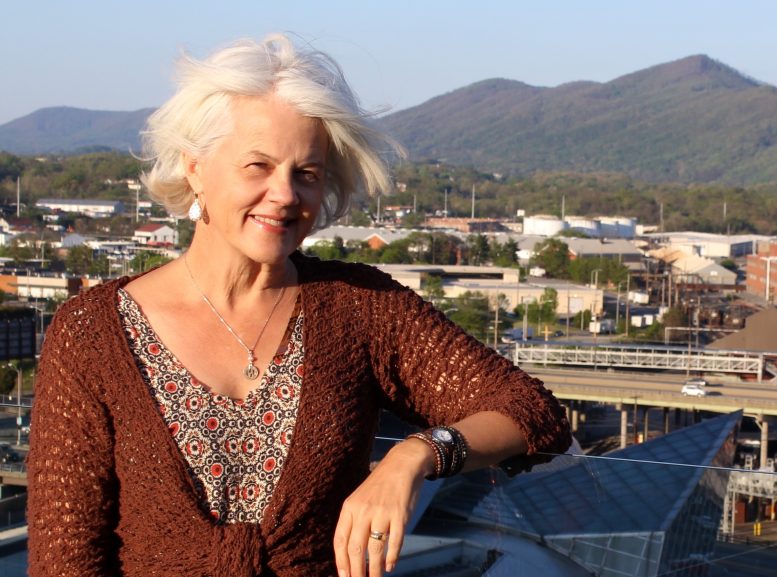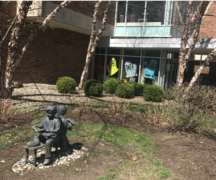By DAVID DUPONT
BG Independent News
Beth Macy has confronted the opioid epidemic face to face.
For her emotional distance isn’t an option. The veteran journalist said: “I got close to people who died, and I got close to people whose children have died. I got close to people who work on this issue every waking hour, and I’ve watched them age before my eyes. I watched myself age.”
She’s poured that experience into “Dopesick: Dealers, Doctors, and the Drug Company that Addicted America,” a best selling book that chronicles the opioid epidemic from the emergence of OxyContin as a painkiller of choice in the 1990s.
Macy will speak Monday, April 1, at 7 p.m. in the Bowling Green Schools Performing Arts Center. The talk is being presented by the Wood County District Public Library as part of its Foundation Series. The event is free. Tickets are available online.
Macy first encountered the drug epidemic as a reporter for The Roanoke (Virginia) Times in 2012. She wrote a three-part series about a cell of heroin users in a nearby white wealthy community.
A teenager had sold heroin to classmate who died, and the teen was headed to prison. The story, Macy said, had “readers spitting their coffee out. ‘What? Wealthy white people are doing heroin?’”
The writer said at the time she didn’t see the connection between the legal opioid OxyContin and heroin. “I didn’t really understand the connection,” she said in a telephone interview. “I didn’t know that OxyContin was a chemical cousin of heroin.”
The addicts weren’t seeking a high. “They’re doing it to avoid being sick, and they’ll do anything to keep from getting sick.”
The reporter turned author soon learned this and more as she researched “Dopesick.”
“I want readers to know about what’s going on in these families, the way I do,” she said. “And the only way I know how to do that is to get people to trust me. … You have to have the trust before you get to the truth of the matter. I do get close to people, and people get close to me. I spend a lot of time with people, but I’m always very, very transparent. I have my phone, recording, with their permission. I’m always the reporter. It may be the 37th time I’ve interviewed you, but I still have my notebook. I don’t want people to forget I’m here to tell a story.”
Macy has traveled extensively to speak about her book and share that story.
In big cities, she said, the people who come to hear her are activists, human service workers, and avid readers. “They’re still kind of shocked.”
But in small, economically distressed communities, Macy said, “I’ll give my speech and people will say: ‘It’s even worst than you said.’ That’s always surprising. These communities are so far beyond being shocked by it because they’ve been dealing with it for two decades now.”
Macy grew up in one of those towns, Urbana, Ohio. Back then the factories were operating and there were jobs. Then the bottom fell out. Nearby Dayton was an epicenter of the epidemic. When the jobs go away, disability claims go up, and with that prescriptions for opioids,she said. Whenever opioids are prescribed at a higher rate heroin deaths are higher than average.
Macy started her newspaper career back then. She was a papergirl. “A lot of the old people would want to talk because they were lonely,” she said. “That’s how I learned to talk to people, talking to strangers. That’s how you learn to get them to open up and trust you. The number one tool in this business is talking to people.”
She attended BGSU, the first in her family to go to college. “It saved my life in some ways,” she said. That made being invited back to be as graduation speaker at last spring’s commencement all the sweeter. “It was awesome to be asked.”
She told graduates about how, inspired by the fictional character, Harriett the Spy, she eavesdropped on passers by while hidden in a lilac bush. She heard the “strange and beautiful, about justice and injustice.”
Macy has continued to tune into those voices.
She said she does see some progress in the battle against opioid addiction. Three New England states — Rhode Island, Massachusetts, and, Vermont — are seeing “slight decreases in overdose death rate.”
They’re doing this by increasing access to:
- Overdose reversal drug Naloxone.
- Harm reduction efforts such as syringe exchanges
- More medication assisted treatment, which is gold standard of care for opioid use disorder.
Those states were also among the first the expand Medicaid coverage. “And that helps, too,” she said.
“Those three states have really made an effort to do what science says is the best way to address opioid abuse disorder, and they’re having progress,” Macy said. “We know what works. We just haven’t done it at a scale that matches the epidemic.”





